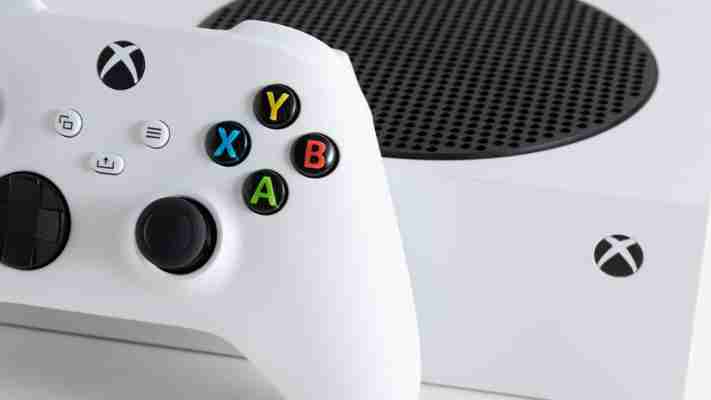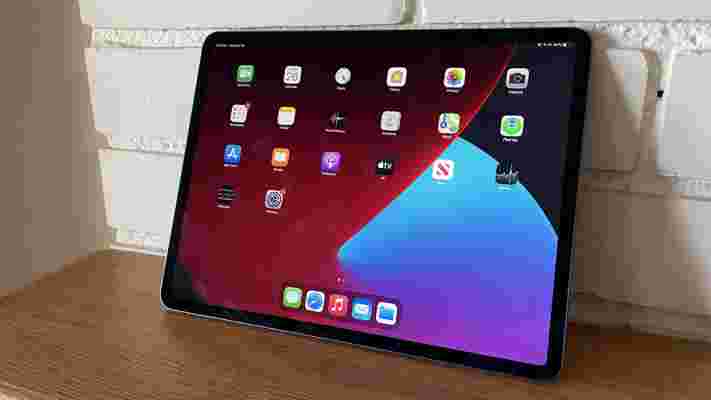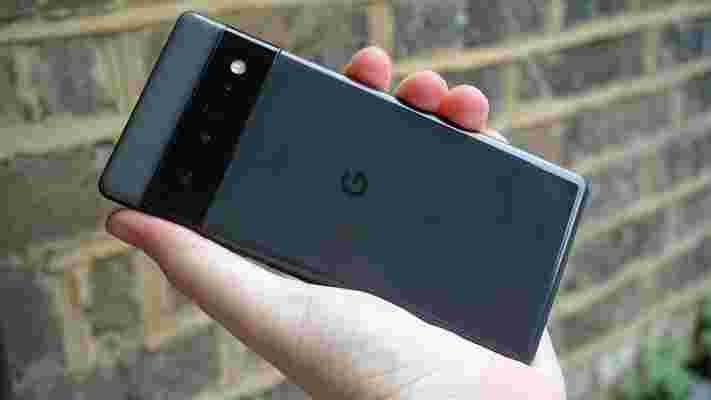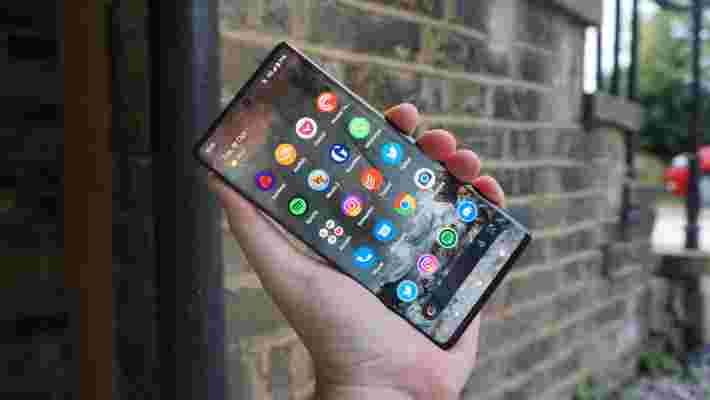Xbox Series S owners can enjoy a new 120Hz refresh option in Halo Infinite, as part of its Season 2 update. That means if you own a compatible display, you can play the game at a silky-smooth 120fps.
Halo Infinite previously targeted 60fps on Xbox Series S , but developer 343 Industries has been able to squeeze more performance out of Microsoft’s more affordable (albeit less powerful) console in Season 2 .
The Xbox Series S was able to hit 120fps during the game’s multiplayer beta, but the resolution was severely compromised as a result. When the game launched, only a 60fps option was available, so it’s great to see a 120Hz mode return, with better image quality to boot.
But it isn’t just Xbox Series S that’s received a new graphics mode. Xbox Series X owners can now choose to run Halo Infinite at a 30Hz refresh rate, which should allow the game to hit a higher resolution. While we wouldn’t recommend sacrificing the benefits of a higher frame rate for more resolution, it’s nice to see that every taste is now catered for.
To change Halo Infinite’s target frame rate, head to the ‘Video’ tab in the game’s settings menu. Unfortunately, as it stands, there’s currently an issue when selecting the aforementioned 30Hz mode, as the gameplay will revert to 60Hz when you next launch the game. The only workaround, as listed on Halo Waypoint , is to set the target frame rate back to 30Hz every time you launch the game.
Don’t count the Xbox Series S out just yet

The Xbox Series S isn’t as powerful as the Xbox Series X, but that doesn’t mean it isn’t a capable next-gen console. The Xbox Series S has already shown it’s powerful enough to run numerous titles at 120fps , and currently has far more games than PS5 that target higher frame rates.
The Xbox Series S also handled Epic's extremely impressive Matrix Awakens: Unreal Engine 5 Experience with aplomb, proving that it’s able to handle the latest graphics technology.
It’s pleasing to see that some developers are taking the time to get the most out of the smallest Xbox ever made, instead of simply ensuring a game will run on Microsoft's cheaper machine. Like Halo Infinite, Dying Light 2 also received an update that improved performance on Xbox Series S shortly after launch. The Xbox Series S is a great entry point into the current-gen of gaming, despite its limitations, and because it's easier to produce, it's now also much easier to buy than Microsoft's flagship console. If you're not fussed about having the best resolution possible, the Xbox Series S is easy to recommend.
New iPad Pro 2022: everything we know so far
For the last few years, Apple has launched its new iPad Pro at its spring launch event. When is the next one? Well, funny you asked - March 8! It came and passed with no Pro model, though the iPad Air 5 sounds very similar.
The iPad Pro (2021) was one of our favorite slates from last year, as Apple's Pro tablets offer loads of power and great-looking screens, so if the company carries on its winning streak the 2022 version could be one of the best tablets of 2022.
We've heard a few rumors about this upcoming iPad Pro so far, and that's because some think the new slates could be a reinvention for the series after a few years of similar-looking slates.
Apple needs to make sure its iPad Pro (2022) is impressive, and that's because competition is coming: the anticipated Samsung Galaxy Tab S8 family could steal its thunder, especially if the rumored Tab S8 Ultra is as big and powerful as leaks suggest.
Ahead of an official unveiling for the Galaxy Tab S8, we've listed all the information provided by leaks and rumors below. There's also a wish-list for the tablet, which explores what we want to see based on its predecessors and trends in the tablet market.
Cut to the chase
iPad Pro (2022) price and availability

The iPad Pro (2021) was launched in April and released in May, roughly a year on from the 2020 model, so it makes sense that the 2022 version could follow the same pattern.
We've got no official confirmation or even rumors of that, but it seemed likely. That is, until the Apple March event took place on the 8th day of the month, with nary an iPad Pro in sight.
Since that would have been an obvious launch event for it, we're now assuming that it might still be quite a way off, and indeed one leak suggests a launch in the 'fall' (meaning September - November).
As Apple's most expensive line of tablets, you can't expect the new iPad Pros to be cheap. The iPad Pro 11 (2021) started at $799 / £749 / AU$1,199 and went up to $2,099 / £1,899 / AU$3,099, while the 12.9-inch model started at $1,099 / £999 / AU$1,649 and capped out at $2,399 / £2,149 / AU$3,549.
We haven't heard information on the new iPad Pro pricing, but these prices likely won't get changed too much in 2022.
News and rumors
The first thing to know about the iPad Pro 2022 is that despite talk that Apple is exploring larger iPad Pro screen sizes for some point in the future, it will probably be the same size as the iPad Pro 2021 , meaning you'd be able to get it in 11-inch and 12.9-inch sizes. That's what Ming-Chi Kuo (an analyst with a great track record for Apple information) reckons anyway.
In the same report, Kuo claimed that the iPad Pro 11 (2022) would get a Mini LED screen. The iPad Pro 12.9 (2022) apparently will as well, but that's not an upgrade for the 12.9-inch model, as the current version already uses Mini LED.
It's worth noting that we had previously heard that the iPad Pro 2022 might get an OLED screen instead , but more recent reports suggest that switch is further out . A screen change which seems more likely is that the 11-inch iPad Pro could get mini-LED , a display tech only used on the 12.9-inch model in 2021.
In other news, according to a report , the next iPad Pro will follow suit from the iPhone 12 and adopt MagSafe - that's the ability to connect, via magnets, to clip-on peripherals like magnetic chargers and cases.
In addition this report suggests the tablet will come with a glass back and will support wireless and reverse wireless charging - the latter is so you can power up other gadgets using the tablet. Later rumors suggested that the tablet might not have an entirely glass back, as that would make it incredibly fragile, but that the Apple logo on the rear could be made of this material, so MagSafe would work in that one particular spot.
We've now heard multiple times that the iPad Pro (2022) will get MagSafe, with one report adding that it will apparently also get an M2 chipset - but that this will have the same CPU as the M1, just with more GPU cores and some speed improvements.
We've also heard that future iPad Pro models might be focused on landscape orientation , with a horizontal Apple logo and cameras. This could also mean a new aspect ratio, though that's just speculation for now. It's worth noting that the source of this leak claims not to be sure whether this change will happen in time for the iPad Pro 2022 though.
A major name in Apple news said that the iPad Pro (2022) would see a redesign over its predecessors, but while the source holds weight, there isn't actually much information regarding what 'redesign' actually means.
What we want to see

1. Lower the price
If you've already read the pricing section above, we probably don't need to go into more detail as to why we want to see a lower price from the iPad Pro (2022).
iPad Pro devices are incredibly expensive tablets, and if you're buying extras like Apple Pencils, keyboard folios, carrying cases, various apps and more, you could find yourself forking over loads just to use the thing.
While the iPad Air 4 does offer lots of the Pro models' specs at a lower cost, it's not quite the same, so some people might want to get the iPad Pro (2022)'s power without the huge cost.
2. Bundle the Apple Pencil
Talking of expensive, let's discuss the Apple Pencil. It's a useful addition for the tablet - some would call it vital - but unlike Huawei's M Pen or Samsung's S Pen, the stylus doesn't come bundled with the tablet.
This means, if you're considering buying the tablet and want the Apple Pencil too, the cost proposition is even higher, which might nudge you towards one of the competing premium tablets.
Plus, bundling the Apple Pencil would help Apple crack down on the myriad knock-off Apple Pencils that don't always work as intended.
3. Improve the battery life

We found both the 2021 and 2020 iPad Pros lasted about ten hours of standard use on a single charge. Sounds fine, right? Well, no, because 'standard use' involves watching Netflix, browsing social media and the like.
If you use your iPad Pro as a professional (like the name suggests), by editing video, music or images, working on multiple documents simultaneously, or even playing games, you can find the battery drains incredibly quickly.
In fact, battery drain on the iPad Pro is so fast that we've often found plugging it in while working only offsets the power use, but doesn't charge it back up.
Power improvements need to be found, whether that's by adding software optimizations that reduce power drain, or simply shoving in a bigger battery. Oh, and faster charging would be nice too - in this day and age, 18W simply isn't fast enough.
4. No processing power restrictions
According to app developers, the iPad Pro (2021) limits how much RAM each app can use to only 5GB - since the top-end version of the slate offers 16GB of RAM, that's a strangely low cap.
This could be an issue for apps that need lots of RAM to run, including AR tools and editing software, and indeed some developers have complained about this limitation.
A RAM cap could stop developers creating apps that need more power too, which would have implications for iPad software in the long run. We'd like to see this cap dropped, either for the iPad Pro (2022) or maybe beforehand for all iPads.
5. iPadOS improvements
iPadOS is a fine tablet operating system, but there are still some important productivity tools that are missing, despite iPadOS 15 's improvements.
Multitasking is an issue, as you can't view three apps simultaneously, or split the screen horizontally, two use cases which certain users might find very useful.
iPadOS 15's Universal Control looks useful, as it lets you drag and drop files and windows between your iPad and a Mac - but iPhone compatibility would make this feature truly seamless for people.
There aren't too many useful home screen widgets for the key productivity apps either, though that's not something Apple can do much about, as it's down to developers.
OnePlus 10 Pro vs Google Pixel 6 Pro: Android Pro face-off
The OnePlus 10 Pro is one of the big Android flagship contenders of early 2022. But can it stand up to Google’s impressively punchy Google Pixel 6 Pro ?
Android OS foundation aside, these are two very different phones with very different backstories.
We haven’t had a chance to go hands-on with the OnePlus 10 Pro yet, given its China-first launch. But what we do have is a full roster of specs and images.
Here’s how the two Pros compare on paper.
OnePlus 10 Pro vs Google Pixel 6 Pro: price and availability
The covers were officially taken off the OnePlus 10 Pro on January 11, 2022, albeit only in its home territory of China. We’re still waiting for a global rollout.
Pricing in China starts at 4,699 Chinese Yuan for 8GB of RAM and 128GB of internal storage, which translates to around $740/£550/AU$1,056. You will pay 4,999 Chinese Yuan ($786/£586/AU$1,123) for 8GB and 256GB, or 5,299 Chinese Yuan ($833/£621/AU$1,191) for 12GB of RAM and 256GB of storage.
Google launched its Pixel 6 Pro on October 28, 2021. Prices kick off at $899/£849/AU$1,299 for 128GB of storage. You can step up to 256GB for $999/£949/AU$1,449. Our US and Aussie buddies also get a 512GB model for $1,099/AU$1,599.

OnePlus 10 Pro vs Google Pixel 6 Pro: design
These two phones don’t look much like one another, which is quite refreshing in a mature smartphone market where genuine design innovation is rare.
Both phones have distinctive camera modules. The OnePlus 10 Pro’s camera is squarer and flatter, and it emerges from the frame on the left-hand side of the phone.
The Pixel 6 Pro camera module resembles a visor, sitting across the entire width of the phone and standing out loud and proud like a Daft Punk helmet.
There’s a lot to be said for the boldness and freshness of the Pixel 6 Pro approach, particularly with its two-tone coloration, split either side of that camera module.

Aesthetics aside, while these are both large phones, the Pixel 6 Pro is the bigger and heavier of the two. While the OnePlus 10 Pro measures 163 x 73.9 x 8.6mm and weighs 200.5g, the Pixel 6 Pro measures 163.9 x 75.9 x 8.9mm and weighs 210g.
Both phones have aluminum frames and Gorilla Glass Victus covers, and both have an IP68 rating, so there’s little to choose between them on the sheer build quality stakes.
OnePlus 10 Pro vs Google Pixel 6 Pro: display
There aren’t too many differences between the displays of these two phones. They are similarly sized, with the OnePlus 10 Pro measuring 6.7-inches and the Pixel 6 Pro coming in at 6.71-inches.
Both have QHD+ resolutions too, so they’re positively pixel-packed. You get the benefits of punchy AMOLED display panel technology too, which means vibrant colors and deep blacks.
While the Pixel 6 Pro is an LTPO display, the OnePlus 10 Pro bumps that up to LTPO2. This means that while the Pixel 6 Pro can scale from 120Hz right down to 10Hz, the OnePlus 10 Pro can drop as low as 1Hz. In other words, it’s the more efficient of the two.

The OnePlus 10 Pro display gets much brighter too, with a peak brightness of 1300 nits as opposed to the Pixel 6 Pro’s 800 nits.
We’ll have to experience the OnePlus 10 Pro screen firsthand to be sure, but it appears to have the slightest edge over the Pixel 6 Pro on paper.
OnePlus 10 Pro vs Google Pixel 6 Pro: cameras
Early signs suggest that the Pixel 6 Pro probably has the better camera here. While Google has taken a notable step forward with its camera offering, OnePlus appears to be treading water – at least from a hardware perspective.
The OnePlus 10 Pro gives you a 48 MP f/1.8 wide sensor, an 8MP sensor capable of 3.3x optically zoomed shots, and a 50MP ultra-wide. All of these seem to be the same as last year’s OnePlus 9 Pro , barring the fact that the ultra-wide has a new wider 150-degree angle.
Conversely, the Pixel 6 Pro has really shaken things up from the Google Pixel 5 . It’s led by a new 50MP wide sensor accompanied by an f/1.85 aperture, plus a 12MP f/2.2 ultra-wide sensor and a 48MP telephoto sensor with a 4x optical zoom.
All in all, we found the Pixel 6 Pro to offer “the best photography experience yet on a Pixel phone”. Presumably, the OnePlus 10 Pro will improve on its predecessor through improved AI algorithms and its more advanced image processing, but it’s unlikely to be an enormous improvement.
OnePlus 10 Pro vs Google Pixel 6 Pro: specs and performance
The OnePlus 10 Pro uses Qualcomm’s cutting-edge Snapdragon 8 Gen 1 processor, which is said to be 20% faster than the Snapdragon 888. Conversely, the Pixel 6 Pro is the first to utilize Google’s own Tensor processor.
This would seem to give the OnePlus 10 Pro the edge in raw performance, even before we’ve tested it. The Pixel 6 Pro returned an average multi-core score in Geekbench 5 of 2760, which is well behind even the OnePlus 9 Pro’s 3630 running the older Snapdragon 888.
While there might be a CPU advantage for the Snapdragon 8 Gen 1 here, we won’t count the Tensor out just yet. Google has focused on machine-learning capabilities for its own chip, which enables that wonderful camera to do its best work, among other things.
Besides, the Pixel 6 Pro feels every bit as fast and smooth as any other flagship phone we’ve used in recent months.
OnePlus has equipped its phone with 8GB of RAM, though there is a 12GB upgrade option. The Pixel 6 Pro gives you 12GB as standard.
On the storage front, both phones give you 128GB and 256GB options, while the Pixel 6 Pro also offers a 512GB option in certain regions.
Another point of conflict here will be the UI. We’re still not sure how the OnePlus 10 Pro will present itself in the West, given that it runs Oppo’s ColorOS in its initial China region guise.
We’re expecting the return of OnePlus’s slick OxygenOS, though even this will be layered over the top of ColorOS due to the merger of the two companies.
The Pixel 6 Pro has no such uncertainty surrounding it. This is the Android 12 flagship, complete with smart ‘Material You’ custom-themed wallpapers. It will receive three full software updates guaranteed, too.
OnePlus 10 Pro vs Google Pixel 6 Pro: battery
Both of these Pro phones run a 5,000 mAh battery, which is needed given those big, sharp, high-refresh-rate displays.
We don’t know what the OnePlus 10 Pro’s stamina will be like just yet, but presumably, it will be a noticeable improvement over the OnePlus 9 Pro, whose battery would “reliably see you through a full day on a full charge with typical use”.
As for the Pixel 6 Pro, we found its battery life to be one of the weaker elements of the phone. Again, though, it was good for a full day of typical usage.
There’s a clear winner when it comes time to recharge. The OnePlus 10 Pro gives you an impressively rapid 80W charger in the box. Google only supports up to 30W charging, and it doesn’t give you a brick either.
In wireless charging terms, the OnePlus 10 Pro supports 50W, while the Google Pixel 6 Pro supports 12W as standard. Google has created its own custom wireless charging dock, but that only goes up to 23W.
Takeaway
We’re going to have to go hands-on with the OnePlus 10 Pro before we can call a winner here, but as things stand it has the potential to give the Pixel 6 Pro a good run for its money.
Its display, processor, and charging speeds look likely to give it an edge over Google’s flagship phone.
On the other hand, we do like Google’s unique design, and its camera looks on course to better the relatively unchanged OnePlus effort. We’re not entirely convinced that OnePlus will be able to keep up its exemplary custom UI work either, while Google gives you pure Android 12.
Add in the unknowns surrounding the OnePlus 10 Pro’s regional pricing, and we’re left with a frustrating lack of conclusions. We’ll be revisiting this Android flagship fight just as soon as we have more hands-on info.